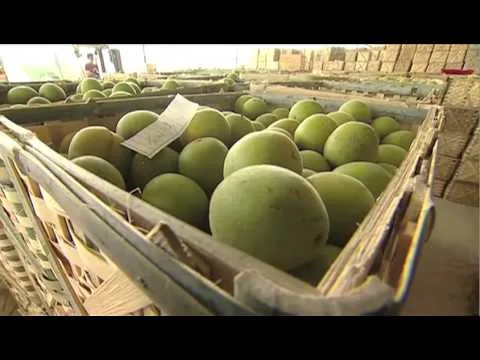Monk fruit, also known as luo han guo, is an exotic fruit native to southern China and northern Thailand. It has been used in traditional Chinese medicine for centuries and is now gaining popularity as a natural sweetener. Growing monk fruit at home can be a fun, rewarding experience that yields interesting, nutritious fruits. In this guide, we’ll walk you through the basics of how to grow monk fruit so you can enjoy its unique sweetness and health benefits.To plant monk fruit, begin by selecting a site with well-draining soil and full sun exposure. Use a shovel or garden trowel to dig a hole that is twice as wide and just as deep as the root ball of the monk fruit seedling. Place the root ball in the hole and fill in with soil, packing it firmly around the roots. Water thoroughly to settle the soil and provide moisture for the new plant. Monitor soil moisture levels regularly and water when necessary. Prune back any dead, diseased, or damaged branches and foliage to promote healthy growth. With sufficient sunlight, water, and nutrients, monk fruit should begin to bear fruit within 3-5 years.
What Is Monk Fruit?
Monk fruit, also known as luo han guo, is a small green melon that grows in Southeast Asia. It has been used for centuries in traditional Chinese medicine, and it is becoming increasingly popular as an alternative sweetener. Monk fruit is about 200 times sweeter than sugar, but it contains no calories or carbohydrates. It is also thought to have some health benefits, including anti-inflammatory and antioxidant properties.
The main active ingredient in monk fruit is mogrosides, which are compounds that provide the sweet taste without any of the calories or carbs found in sugar. The mogrosides are extracted from the fruit and concentrated to create a sweetener that can be used in drinks, desserts, and other foods. Monk fruit sweeteners are considered natural because they come from a plant source and don’t contain any artificial ingredients.
Monk fruit sweeteners may also offer some health benefits compared to other artificial sweeteners. They don’t raise blood sugar levels like sugar does, so they may be beneficial for people with diabetes or on low-carb diets. In addition, studies suggest that monk fruit extract may have anti-inflammatory and antioxidant properties that could help protect against certain diseases.
While monk fruit may offer some potential health benefits, more research is needed to understand its long-term effects on health. As with other alternative sweeteners, it’s important to use monk fruit in moderation and not rely on it as a major source of sweetness in your diet.
Health Benefits of Eating Monk Fruit
Monk fruit, also known as Luo Han Guo, is a traditional Chinese medicinal herb with a sweet taste. It has been used for centuries in China to treat colds and other ailments. Recently, it has gained popularity in the West for its potential health benefits. Studies have found that monk fruit can help to reduce inflammation, improve blood sugar levels, and even offer some cancer-fighting properties. Here are some of the health benefits of eating monk fruit.
One of the most notable benefits of monk fruit is its anti-inflammatory properties. Studies have found that compounds in this plant can reduce inflammation in the body, which can help to improve overall wellbeing. In addition, these compounds may also help to protect against certain types of cancer by preventing tumor growth and promoting apoptosis (programmed cell death).
Monk fruit is also known for its positive effects on blood sugar levels. Studies have found that consuming this herb can help to lower blood sugar levels in people with diabetes or pre-diabetes. This effect may be due to compounds in monk fruit that are able to reduce glucose absorption from the intestines.
Finally, monk fruit may also offer some protection against oxidative stress. Oxidative stress occurs when there is an imbalance between free radicals and antioxidants in the body, which can lead to a variety of illnesses and diseases. Compounds in monk fruit have been shown to reduce oxidative stress, which could potentially prevent or delay a number of health problems.
Overall, there are many potential health benefits associated with eating monk fruit. Not only does it offer anti-inflammatory properties, it may also help to reduce blood sugar levels and protect against oxidative stress. If you’re looking for a natural way to improve your health, consider adding this plant-based remedy into your diet today!
Location
When growing monk fruit, it is important to select an appropriate location. The best spot for monk fruit plants is a location that receives plenty of sun and has well-draining soil. It is also important to keep in mind that monk fruit plants are considered tropical and should not be grown in areas that may experience frost or cold temperatures. Once the appropriate location is chosen, it is important to prepare the soil properly before planting.
Soil Preparation
When preparing the soil for monk fruit plants, it is important to make sure that the soil has an adequate amount of organic matter. This can be done by adding compost or manure to the soil and tilling it in thoroughly. Additionally, it is recommended that a balanced fertilizer be added at this time as well. The fertilizer should have a balance of nitrogen, phosphorus and potassium in order to ensure proper nutrition for the plants.
Planting
Once the soil has been properly prepared, it is time to plant the monk fruit plants. It is recommended that each plant be planted at least three or four feet apart from one another in order to allow for adequate growth and air circulation. When planting, make sure that each plant is planted at the same depth as it was previously growing in its nursery pot or container. After planting, add a layer of mulch around each plant in order to help retain moisture and keep weeds down.
Watering
Monk fruit plants require regular watering in order to thrive and produce healthy fruits. It is recommended that each plant be watered deeply about once per week during dry periods or when rainfall does not occur naturally. It is also important to note that over-watering can lead to root rot and other problems so care should be taken when watering these plants.
Pruning
Pruning can help keep monk fruit plants healthy and promote new growth as well as increased fruit production. Pruning should generally begin when the plants are young and continue throughout their life cycle as needed. This can include removing dead branches, thinning out dense foliage or trimming back unruly vines or shoots as they appear throughout the growing season.
The Best Location for Planting Monk Fruit
Monk fruit, or luo han guo, is a unique and flavorful fruit that has been traditionally used in Chinese medicine for centuries. It has recently become popular in the United States as an alternative sweetener due to its low glycemic index. To grow monk fruit successfully, it’s important to select the best location for planting.
Monk fruit grows best in warm climates with temperatures ranging between 65-85 degrees Fahrenheit. It prefers full sun exposure and well-drained soil with a pH of 6-7. If possible, plant monk fruit trees in an area that receives at least 6 hours of direct sunlight each day. Additionally, it is important to choose an area that is sheltered from strong winds and heavy rain to protect the plants from damage.
It is also important to note that monk fruit trees require a lot of space for their roots to spread out and take hold in the soil. Planting them too close together can reduce yields and stunt growth, so make sure there’s ample room between plants when choosing a location for planting. Additionally, if you plan on harvesting your monk fruit trees, it’s best to avoid areas prone to flooding or heavy rains which can cause the fruit to spoil before you have a chance to pick it.
Finally, when planting monk fruit trees, make sure you choose a spot with plenty of room for the tree to grow without being crowded by other plants or structures such as buildings or fences. Selecting the right location for planting can go a long way towards ensuring your success when growing monk fruit!

How to Care for Monk Fruit Plants
Caring for monk fruit plants is easy as long as the right conditions are met. The plant requires plenty of sunlight and warm temperatures in order to thrive, so it is important to make sure it is kept in a sunny spot. It also needs regular watering and fertilizing to ensure that it produces the best fruits. The soil should also be well draining, so if your soil tends to get waterlogged, consider using a potting mix with added perlite or pumice. Additionally, it is important to prune the plant regularly in order to keep it healthy and promote more fruit production. Lastly, watch out for pests and diseases that could affect your plant’s health and take measures to prevent them. With proper care, monk fruit plants can produce delicious fruits for many years!
Soil Requirements for Growing Monk Fruit
Monk fruit is a tropical fruit native to Southeast Asia, and it is becoming increasingly popular for its sweet taste and potential health benefits. However, in order to grow monk fruit successfully, the right soil requirements must be met. The soil should be well-draining, with a pH between 5.5 and 6.5. Clay soils should be avoided, as they can lead to poor drainage and anaerobic conditions that can stunt growth or even kill the plant. For optimal growth, the soil should contain plenty of organic matter such as compost or manure. Additionally, monk fruit plants require frequent watering in order to thrive; regular rainfall is generally not enough water for them to survive. When planting monk fruit, mulch should be added around the base of the plant to help retain moisture and control weeds. With the right soil requirements and adequate watering, monk fruit plants can produce sweet fruits each season for many years to come.
Harvesting Monk Fruit
Monk fruit is a sweet, tropical fruit that is native to Southeast Asia. It is harvested in the early summer months when the fruit is ripe and sweet. Monk fruit trees grow up to six feet tall and can produce up to 200 fruits per tree. The fruits can be picked by hand or with a harvesting tool. Once the fruit is picked, it should be stored in a cool, dry place away from direct sunlight and heat. The fruits should be washed and dried thoroughly before storage to prevent spoilage.
Storing Monk Fruit
Monk fruit can be stored for up to three months if kept in an airtight container in a cool, dry place. The container should be lined with paper towels or newspaper as this will help absorb any excess moisture that may collect on the surface of the fruit during storage. Additionally, monk fruit can also be frozen for longer-term storage up to one year. To freeze monk fruit, it should be washed, dried thoroughly, cut into small pieces and placed into an airtight container before freezing. Freezing monk fruit will help preserve its flavor and sweetness for longer periods of time.

Conclusion
Monk fruit is a unique and delicious type of fruit that has a lot of potential for growing. Its low-calorie sweetness makes it an ideal sugar substitute, and its health benefits are numerous. With the right care and cultivation, monk fruit can be an exciting addition to any garden or orchard. Growing monk fruit is not difficult, but it does require some specific steps to ensure good production and quality. It needs full sun, plenty of water and fertilizer, pruning, thinning, pest control, and harvesting at the right time. Following these steps will help ensure successful growth of monk fruit trees and shrubs.
When grown correctly, monk fruit can provide a sweet and healthy addition to any diet. With its unique flavor profile and natural sweetness it can be used in baking or cooking for added flavor without adding calories. Whether grown in your backyard or purchased from a store, monk fruit is one of the most rewarding fruits to grow for both gardeners and consumers alike!



